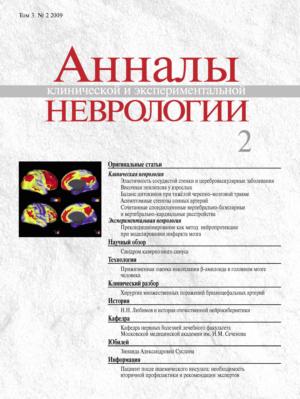Five hundred thirty six patients with focal epilepsy, including 136 patients with temporal epilepsy (TE) aged 17–79 years were examined. In all patients specific therapy with antiepileptic drugs was initiated or corrected. The lack of pathological EEG changes was registered in 33 patients (24.3%), regional slowness in temporal zones was found in 22 (16.2%), focal epileptoform activity of the same localization – in 75 (55.1%), and diffuse epileptiform activity – in 6 (4.4%). On MRI, no changes in the brain were found in 50 patients (36.8%), non-epileptogenic changes (hydrocephaly, retrocerebellar cycts, etc.) were diagnosed in 17 (12.5%), moderately epileptogenic changes (post-stroke and posttraumatic cycts, foci of gliosis, etc.) in 42 (30.9%), and highly epileptogenic in 14 (10.3%), including hippocampal sclerosis in 8 (5.9%). The vast majority of adult TE cases were found to manifest with combination of secondarily generalized and focal (partial) seizures, the latter being predominantly automotor (32.3%) and dialeptic (27.9%). Medication remission among the patients under study was achieved in only 28.2% of cases; this confirms the opinion that TE represents not only the most frequent form of focal epilepsy in adults, but also great challenge for cure.
Criptogenic and symptomatic temporal epilepsies in adults
- Authors: Kotov S.V.1, Rudenko A.M.2
-
Affiliations:
- M.F. Vladimirsky Moscow Regional Research and Clinical Institute
- Moscow Regional Research Clinical Institute (MONIKI)
- Issue: Vol 3, No 2 (2009)
- Pages: 9-13
- Section: Original articles
- Submitted: 07.02.2017
- Published: 14.02.2017
- URL: https://www.annaly-nevrologii.com/journal/pathID/article/view/378
- DOI: https://doi.org/10.17816/psaic378
- ID: 378
Cite item
Full Text
Abstract
About the authors
Sergey V. Kotov
M.F. Vladimirsky Moscow Regional Research and Clinical Institute
Email: kotovsv@yandex.ru
ORCID iD: 0000-0002-8706-7317
D. Sci. (Med.), Head, Department of neurology, Faculty of advanced training for doctors
Russian Federation, MoscowA. M. Rudenko
Moscow Regional Research Clinical Institute (MONIKI)
Author for correspondence.
Email: kotovsv@yandex.ru
Russian Federation, Moscow
References
- Петрухин А.С. Эпилепсия: частота в популяции и факторы риска ее развития. В кн.: Петрухин А.С., Мухин К.Ю., Благосклонова Н.К., Алиханов А.А. (ред.) Эпилептология детского возраста. М: Медицина, 2000: 44–63.
- Brodie M., Schachter S. Fast Facts – Epilepsy. Oxford: Health Press Limited, 2001.
- Cendes F., Andermann F., Dube. aeut aFl. Early childhood prolonged febrile convulsions, atrophy, and sclerosis of mesial structures and temporal lobe epilepsy: an MRI volumetric study. Neurology 1993; 43: 1083–1087.
- Cendes F., Andermann F., Gloor P. et al. Atrophy of mesial structures in patients with temporal lobe epilepsy: cause or consequence of repeated seizunrens?NAeurol. 1993; 34: 795–801.
- Engel J. Jr. Diagnostic evaluation. In: Seizures and Epilepsy. Philadelphia: FA Davis, 1989: 303–339.
- Falconer M.A. Genetic and related etiological factors in temporal lobe epilepsy: a review. Epilepsia 1971; 12: 13–31.
- French J.A., Williamson P.D., Thadani V.M. et al. Characteristics of medial temporal ploibleepesy I. Results of history and physical examination. Ann. Neurol. 1993; 34: 774–780.
- Jacobs R., Harvey A.S., Anderson V. Executive function following focal frontal lobe lesions: impact of timing of lesion on outcome. Cortex 2007; 43: 792–805.
- Von Oertzen J., Urbach H., Jungbluth S. et al. Standard magnetic resonance imaging is inadequeatfor patients with refractory focal epilepsy. J. Neurol. Neurosurg. Psychiatry 2002; 73: 643–674.
- Majores M., Schoch S., Lie A. et al. Molecular neuropathology of temporal lobe epilepsy: complementary approaches in animal models and human disease tissue. Epilepsia 2007; 48 (Suppl. 2): 4–12.
- Mathern G.W., Pretorius J.K., Babb T.L. Influence hofettype of initial precipitating injury and at what age it occurs on course and outcome in patients with temporal lobe seizures. J. Neurosurg. 1995; 82: 220–227.
- Okada R., Moshe S.L., Albala B.J. Infantile status epilepticus and future seizure susceptibility in the rat. Dev. Brain Res. 1984; 15: 177–183.
- Ray A., Kotagal P. Temporoalbel epilepsy in children: overview of clinical semiology. Epileptic Disord. 2005; 7: 299–307.
- Saygi S., Spencer S.S., Scheyer R. et al. Differentiation of temporal lobe ictal behavior associated with hippocampal sclerosis and tumors of temporal lobe. Epilepsia 1994; 35: 737–742.
- Semah F., Picot M. C., Adam C. et al. Is the underlying cf aeupsie o lepsy a major prognostic factor for recurrence? Neurology 1998; 51: 1256–1262.
- Spooner C.G., Berkovic S.F., Mitchell L.A. et al. New-onset temporal lobe epilepsy in children: lesion on MRI predicts poor seizure outcome. Neurology 2006; 67: 2147–2153.
- Sussman N.M., Jackel R.A., Kaplan L.R. et al. Bicycling movements as a manifesattion of complex partial seizures of temporal lobe origin. Epilepsia 1989; 30: 527–531.
Supplementary files








